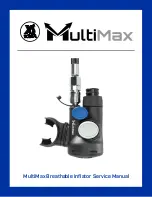
Fig 3 Indicator providing a remote display
4. INSTALLATION
4.1 Location
Both indicators have a robust stainless steel case with
a 10mm thick toughened glass window. The case
provides 7J and the window 4J front of panel impact
protection. The captive silicone gasket, which seals
the joint between the instrument and the panel
enclosure, ensures IP66 front of panel ingress
protection. Both indicators have IP20 rear protection.
Although the front of the indicators have IP66
protection, they should be shielded from continuous
direct sunlight and severe weather conditions.
The BA507E-SS and BA527E-SS may be located in
any panel providing that the operating temperature is
between –40°C and +70°C. For most industrial
applications the rear of the panel enclosure in which
the indicator is mounted should provide additional
protection to prevent the ingress of moisture into the
rear of the instrument.
4.2 Installation Procedure
a. Cut the aperture specified in Fig 4 in the panel
enclosure. Ensure that the edges of aperture
are de-burred.
b. Inspect the indicator's captive gasket and
ensure that it is not damaged before inserting
the indicator into the panel enclosure aperture.
c. If the enclosure panel is less than 1.0mm thick,
or is non-metallic, an optional BEKA stainless
steel support plate should be slid over the rear
of the indicator before the panel clamps are
fitted to evenly distribute the clamping force and
prevent the enclosure panel being distorted or
creeping.
d. Slide a panel clamp into the two grooves at
each corner of the indicator housing with the
M3 stud protruding through the hole at the
rear of the clamp. Fit the stainless steel spring
washer over the stud and secure with the
stainless steel wing nut.
Fig 4 Dimensions
e.
Evenly tighten the four clamps to secure the
instrument. The recommended minimum
tightening torque for each wing nut is 22cNm
(1.95 lbf in).
f.
Connect the panel enclosure wiring to the
rear terminal blocks. To simplify installation,
the terminals are removable so that wiring
can be completed before the instrument is
installed.
g. Finally, fit a silicone rubber push-on cap to
the end of each M3 threaded rod.
Fig 4 show the overall dimensions of the indicators
together with the recommended panel enclosure
cut-out dimensions.
5






































